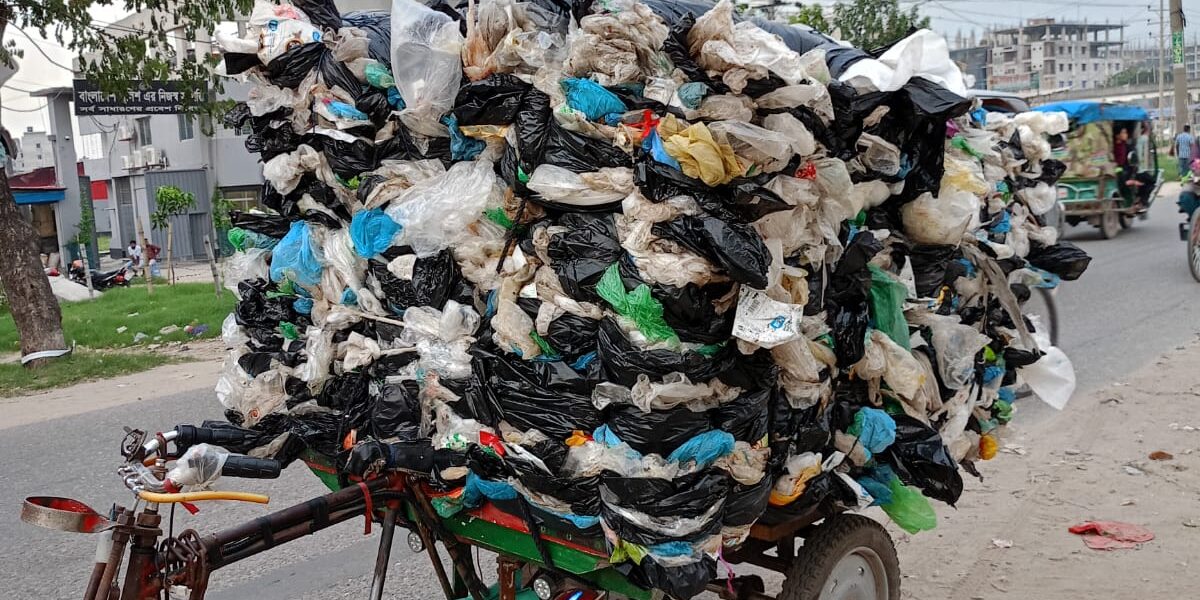Chemical-based plastic recycling, also known as advanced or chemical recycling, involves breaking down plastic waste into its original chemical components. Unlike mechanical recycling, which involves physically melting and reshaping plastics, chemical recycling breaks the plastic polymers into monomers or other basic chemicals that can be reused to make new plastics or other products. Here’s how it works:
1. Depolymerization:
- Plastics are made of long-chain polymers. Chemical recycling techniques break these polymers down into their monomers or smaller compounds.
- This process can be done through methods like pyrolysis, gasification, or solvolysis.
2. Types of Chemical Recycling:
- Pyrolysis: Plastics are heated in the absence of oxygen to produce liquid oil or gas that can be refined and used to create new plastics or fuels.
- Gasification: Plastics are heated with limited oxygen to produce syngas (a mixture of hydrogen and carbon monoxide), which can be converted into chemicals or fuels.
- Solvolysis: This process involves using solvents to dissolve the plastic and recover the monomers or other raw materials.
3. Purification:
- After breaking down the plastics, impurities such as dyes, additives, or other contaminants are removed to ensure the quality of the final recycled products.
4. Repurposing:
- The recovered monomers or chemical building blocks can then be re-polymerized to form new plastics, or they can be used in other chemical processes, including the production of fuels, lubricants, or synthetic materials.
Benefits of Chemical Recycling:
- Circularity: It allows plastics to be recycled multiple times without degrading their quality, unlike mechanical recycling.
- Handling mixed and contaminated plastics: Chemical recycling can handle complex or contaminated plastic waste streams that are not suitable for mechanical recycling.
- Waste reduction: It helps reduce the volume of plastic waste going to landfills or incineration.
However, chemical recycling is still in its early stages, and challenges such as high energy requirements, costs, and scalability remain.
“In Dhaka 646 tons of plastic waste is collected daily, that is 10 percent of all wastes generated in entire Bangladesh. Only 37.2 percent of the plastic waste in Dhaka is recycled.” – World Bank
Bangladesh has been making efforts to address its substantial plastic pollution problem, particularly with single-use plastic bags, but the implementation of chemical recycling remains limited. The country has faced challenges due to a lack of advanced recycling technology and inadequate waste segregation systems. Although the government has implemented policies like the National 3R (Reduce, Reuse, Recycle) Strategy and a ban on polythene bags, enforcement has been inconsistent. As a result, plastic bags often end up polluting rivers and oceans, with an estimated 14 million plastic bags discarded daily in Dhaka alone.
While Bangladesh has seen some progress in managing plastic waste through traditional recycling and waste management programs, large-scale chemical recycling initiatives are not yet widespread. This is partially due to the higher costs associated with recycled materials compared to virgin plastics and the energy-intensive nature of the process. However, initiatives are being discussed to promote alternatives to single-use plastics and improve overall waste management infrastructure.
KS Rubber Industries located in Hazaribag, Dhaka, Bangladesh converts discarded plastic bags into synthetic rubber sheets by using chemical additives, filler agent, recovered carbon black. Which is close to chemical based plastic recycling and its new technology developed locally. We consider this as a discarded plastic upcycling process, since we reshaped or transformed plastics into completely new synthetic rubber sheets from a pile of waste materials. However, this is energy intensive, critical to run supply chains of plastic raw materials from all over the country and requires big funding. We hope to achieve more plastic recycling capacity in the coming months

















